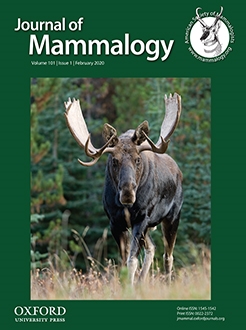The nine-banded armadillo (Dasypus novemcinctus) is unique among mammals because females produce litters of genetically identical quadruplets via monozygotic polyembryony. This unusual form of reproduction could have profound impacts on the spatial genetic structure of populations of armadillos, but at present it is unclear whether littermates remain together as adults, or if sex-biased dispersal occurs. The goal of our study was to determine whether fine-scale spatial genetic structure (FSGS) within a population of armadillos diminishes with age (i.e., from juvenile to adult due to the dispersal of littermates away from one another), and if the degree of FSGS for a given age class differs between the sexes. We obtained genotype data at seven microsatellite DNA loci for 421 individuals in a wild population of armadillos inhabiting the Yazoo National Wildlife Refuge in western Mississippi. Correlogram analyses based on measures of spatial genetic autocorrelation showed weak but significant FSGS that was driven by positive spatial genetic autocorrelation among both male and female juveniles and adult males, but not adult females. Positive spatial genetic autocorrelation among adult males could be due to either female-biased dispersal or high variance in male reproductive success. Further work is required to discriminate between these two possibilities.
How to translate text using browser tools
4 December 2019
Spatial genetic structure within a population of nine-banded armadillos in western Mississippi
Loren A. Binns,
W. J. Loughry,
Colleen M. McDonough,
Corey Devin Anderson
ACCESS THE FULL ARTICLE

Journal of Mammalogy
Vol. 101 • No. 1
February 2020
Vol. 101 • No. 1
February 2020
Dasypus novemcinctus
microsatellites
nine-banded armadillo
sex-biased dispersal
spatial genetics




